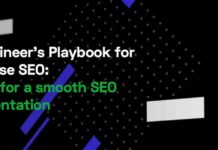User research has become a crucial aspect of many organizations, yet it is facing a crisis due to layoffs and lack of connection to business metrics. Erin Weigel, a specialist in conversion design, highlights the importance of connecting research to value-creating work to navigate economic challenges successfully. In her book, “Design for Impact: Your Guide to Designing Effective Product Experiments,” she provides valuable insights into the Conversion Design process, which focuses on understanding customers and creating measurable business value.
The Conversion Design process is grounded in systems thinking, starting with understanding customers and making informed decisions that drive both customer and business value. To effectively conduct research, it is essential to view it through the lenses of important business goals. By aligning research with business objectives, companies can uncover impactful insights that lead to meaningful outcomes.
Research questions play a crucial role in collecting data that informs decision-making. Qualitative and quantitative data provide valuable insights that help address user needs and drive business growth. By asking exploratory, descriptive, explanatory, and relationship-based questions, researchers can uncover valuable information that guides experimentation and product development.
Choosing the right research method is essential in uncovering different types of insights. The Landscape of User Research Methods, created by design strategist Christian Rohrer, helps in selecting the most suitable research method based on the desired output and the type of insight needed. Whether qualitative or quantitative, research methods should align with the research question and the goals of the business.
Creating a conducive research environment is also important in shaping the quality of observations. Controlled, remote, and natural environments offer unique advantages depending on the type of product and the behavior being studied. By considering the research question, the required insight, product maturity, available resources, and access to data, researchers can choose the most appropriate environment for conducting research.
Analyzing data collected from various sources, including analytics reports, customer service contact logs, review sites, and surveys, can provide valuable insights into user behavior and preferences. By identifying top customer issues, quantifying their impact, and experimenting with potential solutions, companies can address user needs effectively and drive positive outcomes.
Experimenting to learn is a key component of the research process, allowing researchers to understand the value of each element on a page and make informed design decisions. By playing with different elements, running A/B tests, and prioritizing impactful content, companies can design products that meet user needs and drive business success.
In conclusion, effective research methods are essential for unlocking powerful brand insights and driving business success. By connecting research to value creation, asking the right questions, choosing appropriate research methods, and analyzing data effectively, companies can gain a deeper understanding of their customers and make informed decisions that lead to impactful outcomes.























